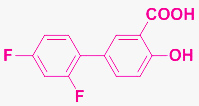-
Faculty Development Teacher Training Course
Dean, School of Pharmacy
Email : rramajayam@hotmail.com
Mobile : +91-8608856198
Whatsapp : +91-8778997750
Academic
-
2014
-
2007
-
Ph.D. in Pharmacy, The Maharaja Sayajirao University of Baroda, Vadodara, India.
Dissertation Title: Design, Synthesis and Biological Studies of some Novel Diazepines and Pyrimidines.
-
-
2004
-
Master of Pharmacy, The Maharaja Sayajirao University of Baroda, Vadodara, India.
-
-
2002
-
B. Pharmacy, The Tamil Nadu Dr. M. G. R. Medical University, Chennai, India.
-
Honor and Awards
-
2012Specially Appointed Assistant Professorfrom Osaka University, Osaka, Japan
-
2011Received Postdoctoral Fellowshipfrom National Science Council, Taiwan
-
2009Received Regular Postdoctoral Fellowshipfrom Academia Sinica, Taipei, Taiwan
-
2008Fast Track Proposals for Young Scientistsfrom DST, New Delhi, India
-
2007Research Associate Fellowshipfrom DST, New Delhi, India
-
2006Senior Research Fellowship (SRF)from ICMR, New Delhi, India
-
2004Junior Research Fellowship (JRF)from UGC, New Delhi, India
-
2002Junior Research Fellowship (JRF)from UGC, New Delhi, India
-
2002Qualified GATE-2002with 97.41 percentile






















